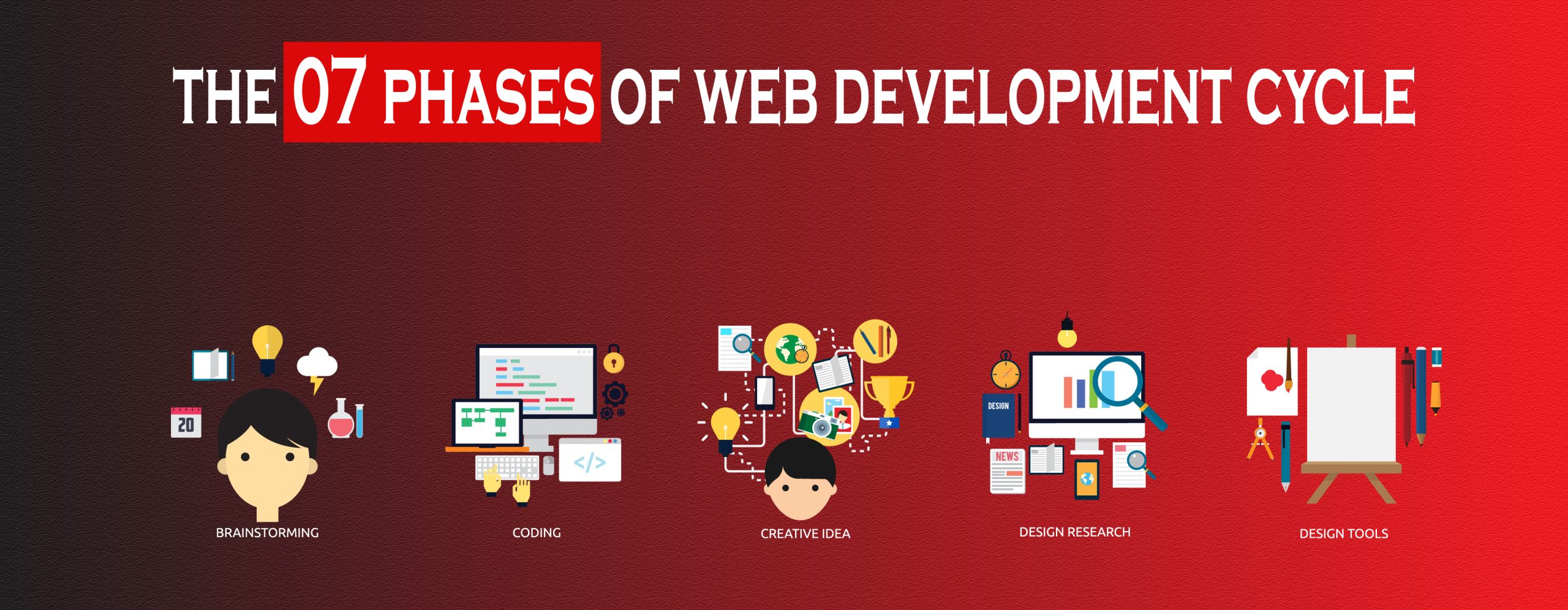
Today, web development is extremely popular. For businesses to meet the customers’ digital needs, having a well-functioning website or web application is now a prerequisite. No matter their industry, almost all businesses are concentrating on building attractive websites to market their products. You’ve come to the right place if you operate a business and are considering creating a website. We’ll cover each of the seven phases of the web development life cycle in this blog. Your internet presence can be improved by a well-designed website that attracts visitors and produces leads.
Building websites and web apps that function online is called web development. everything from coding a fully fledged, robust web application and a content management system to a straightforward static one-page website.
The entire process of creating a website, from conceptualizing the idea to coding and designing the website to deploying and managing it, is covered under a web development life cycle. It is the accepted or methodical procedure to adhere to in order to create a successful website.
It provides a simple roadmap of the software development life cycle that a web developer and project manager can follow to achieve the fewest possible mistakes and the best outcomes.
The seven phases of web development are:
Finding out and doing research is the stage that sets the tone for the rest of the process. Gaining a clear knowledge of your future website’s purposes, the primary objectives you hope to achieve, and the target audience you want to draw to your site is the most crucial task at this time. Such a website development questionnaire aids in formulating the best plan of action for subsequent project management. Different website kinds offer users varying functionality, hence various technologies should be employed in accordance with objectives. Based on this pre-development information, you can create a detailed plan that will prevent you from having to spend extra money on unforeseen problems like redesigning the product or adding functionality that wasn’t originally planned.
The plan for developing a website includes strategies for the website’s design, technology, content, and promotion. The structure and characteristics of the website are decided upon in light of the data obtained and examined in the previous step. A committed team is created during the planning phase, and each member is assigned a specific function and set of tasks. Before building a website, it’s crucial to decide on the content organization, wireframes (schematics and rough designs), technological stack, and software development methods. The Planning phase also involves allocating resources, establishing deliverables, estimating timescales, and creating a sitemap.
Your website develops during the design stage. This process involves creating all of the visual content, including pictures, videos, and images. Again, all of the data acquired during the initial phase is essential. When creating a design, keep in mind the client and the intended audience. A designer’s work is evident in the website layout. It could be a graphic design or just a graphic sketch. The layout’s main purposes are to showcase the material, reflect the information structure, and show fundamental functionality. Layouts can provide a general understanding of the next product because they feature colors, logos, and images. The client can then inspect the layout and provide you his comments. You should alter the layout and send it back to the client if there are any areas of your design that the client is unsure of. The customer should be kept completely satisfied by repeating this cycle.
Content is king, as we have heard. Yes, the best content frequently generates good revenue. It’s simple to convince your users when your material is engaging. The purpose of a website is to inform the visitor about your service or product. The visitor will not be able to learn all the specifics of the service or product if the information is confusing. Your visitor won’t take any action. Writing engaging content is essential to the creation of websites.
Also Read: BEST T-SHIRT DESIGN IDEAS
One of the most crucial and labor-intensive phases is this one. The team starts the process of encoding every aspect of the project. At this point, the project is progressively becoming more useful. It matters how you sprint and release. The client can now plainly see how each module is used at this point.
Making a website is just the beginning. Testing is now required to ensure that there are no defects and that the end-user experience won’t suffer at any time. Developers thoroughly review their websites during the testing phase, noting any bugs or flaws that should be tracked, corrected, and then retested.
Once your new site is live, the development process is not always finished. Your corporate identity and brand should be reviewed on a regular basis. The Loupe can offer suggestions for updates and new functionality that will keep your site appealing and at the top of search engine results pages by routinely assessing and evaluating your content, format, and traffic to your site.
Always keep in mind that developing a website is a continuous process that doesn’t start with coding and continues even after it is live. It requires knowing the client’s requirements, having knowledge of the target market, conducting market research, planning, designing, developing, testing, and maintaining. It is a continuous journey that may be improved every day. If you’re having trouble, don’t be afraid to contact the top web development services company, who will help you every step of the way.
